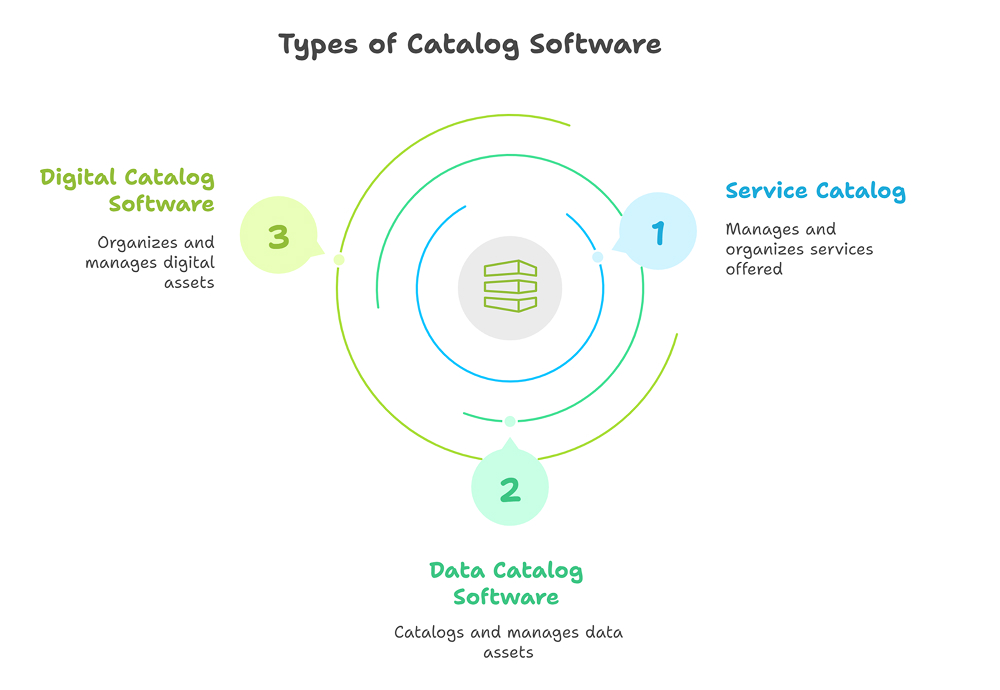As engineering teams scale, clarity, visibility, and structured knowledge sharing become critical. A software catalog provides a centralized framework for organizing, discovering, and managing internal services, libraries, and components. In environments where technical sprawl grows quickly, cataloging software assets isn’t a nice-to-have-it’s essential.
What is a Software Catalog?
A software catalog is a centralized repository that stores metadata about internal software components, tools, libraries, and services used across an organization. Think of it as a structured inventory-not of physical hardware, but of digital building blocks.
A software catalog helps teams:
- See what already exists.
- Avoid duplicate development.
- Understand service ownership and health.
- Locate relevant documentation.
Without one, engineers spend time rediscovering services, guessing ownership, and duplicating functionality. With one, discovery is simple, ownership is visible, and documentation is connected.
Why You Need a Software Catalog
Most engineering teams hit a tipping point where tribal knowledge becomes a bottleneck. At that stage, scaling efficiently demands visibility.
Benefits of implementing a software catalog:
- Improved discoverability: Developers can find existing services, libraries, or APIs before building redundant ones.
- Clear ownership and documentation: Each item in the catalog links to its owning team, documentation, and lifecycle stage.
- Faster onboarding: New team members ramp up quickly with access to a centralized view of the software ecosystem.
- Dependency awareness: Understand how services are connected to manage changes, incidents, and upgrades more effectively.
- Security and compliance: Track and audit third-party dependencies or internal packages with ease.
Key Features of Effective Catalog Management Software
When choosing or building a software catalog, certain features make the system truly useful:
- Automatic discovery: Integrates with your source control and CI/CD tools to auto-register components.
- Service ownership linking: Connects each component to a team, owner, or responsible person.
- Extensible metadata: Custom fields and tagging for environments, language, domain, etc.
- Search and filtering: Intuitive UI to locate services by name, tech stack, or ownership.
- Lifecycle tracking: Visibility into whether a service is experimental, active, deprecated, or retired.
Types of Catalog Software

There are different types of catalog software, depending on your organization’s focus:
- Service catalog: Tracks services and microservices across engineering.
- Data catalog software: Focuses on datasets, data pipelines, and governance.
- Digital catalog software: Used more broadly across products, including non-code assets.
Each of these categories plays a unique role in structuring different parts of a tech ecosystem.
Catalog vs. Documentation
While documentation tools focus on describing how something works, a software catalog focuses on what exists, where it lives, and who owns it.
- Documentation answers, “How does this work?”
- Catalog answers, “What exists? Who owns it? What is its status?”
Catalogs and documentation complement each other. A good catalog links directly to relevant documentation repositories, such as Confluence, GitHub README files, or internal wikis.
Real-world Use Cases
Here are some ways engineering teams are using software catalogs today:
- Onboarding: Gives new engineers a clear map of internal tools and services.
- Incident response: Quickly find owners and dependencies during outages.
- Architecture reviews: Prevents teams from reinventing the wheel.
- Technical debt audits: Identifies unused or outdated services.
Tools and Platforms
A few tools are leading the way in this space:
- Backstage by Spotify: Open-source framework for building internal developer portals.
- OpsLevel: Managed platform with deep integrations and maturity tracking.
- Atlassian Compass: Catalog and health tracker for components and teams.
Each tool approaches the problem slightly differently, so consider your team’s needs.
How Software Catalogs Support Code Refactoring
A well-maintained catalog also supports cleaner code practices. It reduces duplication, surfaces unused components, and gives visibility into what should be updated or removed. This clarity complements any refactoring meaning or effort.
In fact, organizations that use a catalog often combine it with code refactor AI tools to automate cleanup across known services and libraries. By cataloging components and using AI to improve them, engineering teams can achieve both refactoring definition goals (i.e., improving code structure without changing its behavior) and strategic modernization.
Final Thoughts
A software catalog isn’t just a database-it’s a shift in how teams think about code ownership, system visibility, and collaboration. Whether you use open-source tools like Backstage or commercial options like OpsLevel, the value lies in consistency and adoption.
Start small when creating a software catalog. Scope your catalog to the most active services. Link each one to a team, add basic metadata, and integrate with documentation. Let it grow organically.
The result? A more organized, maintainable, and secure software ecosystem that scales with your team.
FAQs
1. What is the difference between a software catalog and a service registry?
A service registry tracks service instances at runtime (often used in microservices environments). A software catalog, in contrast, focuses on metadata, ownership, and documentation rather than runtime routing.
2. Can small teams benefit from cataloging?
Yes. Even in small teams, documenting what exists and who owns it fosters better habits, helps onboard new team members faster, and prevents duplication.
3. Is it only a catalog service?
No. Modern catalogs also track libraries, scripts, APIs, infrastructure components, and even design assets, depending on the organization’s scope.
